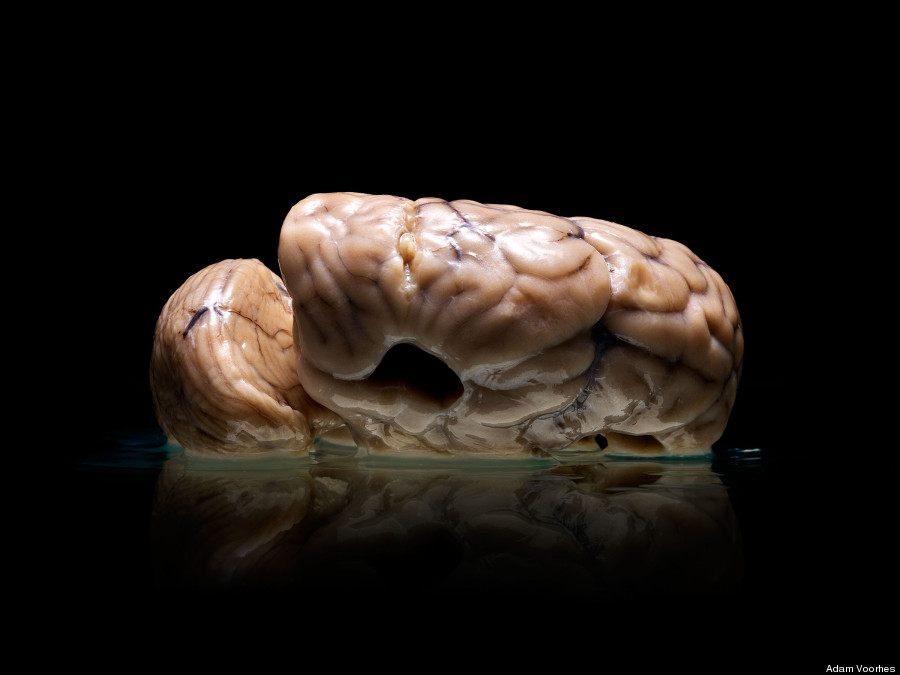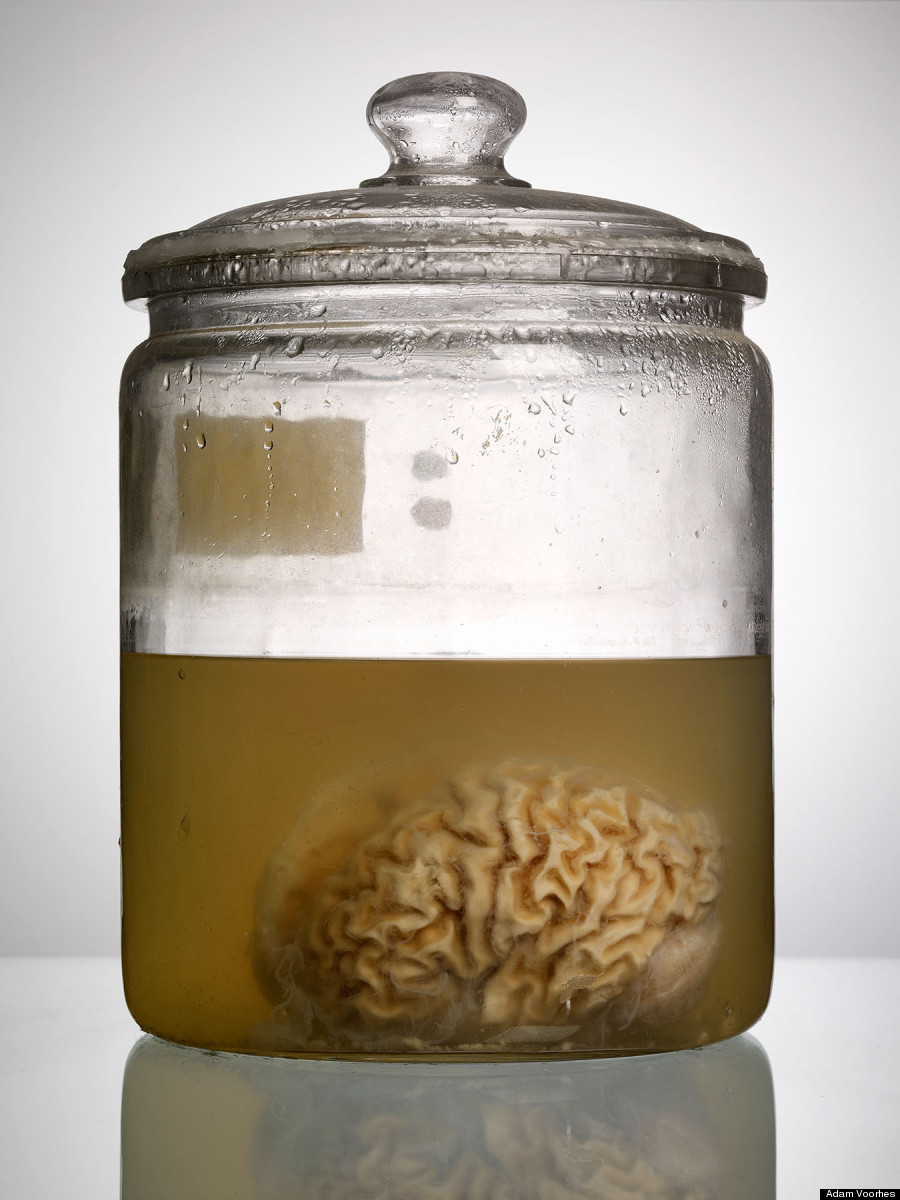Last month, a Halloween-appropriate story went viral, of a cache of brains, decades old, that seemed to have vanished. The missing brains were part of a gift of 200 or so bequeathed to the University of Texas at Austin in 1986, after a frenzied bidding war among institutions including Harvard University. Dating back to the 1950s, the brains came from patients of what was then called the Texas State Lunatic Asylum (since rechristened the Austin State Hospital), an atypically benevolent mental institution from the days when such places could be as bleak as prisons.

The university was ostensibly keeping the brains to research what happens when conditions like Huntington's Disease, Alzheimer's, and Down Syndrome go untreated. Somewhere along the way though, it lost interest. Half of the collection was "destroyed" under supervision, according to university officials, who conducted an investigation after the missing brains became a viral sensation.
That we know of the specimens at all is largely due to photographer Adam Voorhes. On assignment to photograph a single brain for Scientific American, Voorhes stumbled upon a closet stacked with jars of the organs steeped in formaldehyde, some visibly decayed, others still "dense as a basketball," as he recently told HuffPost by phone.
Documenting the unbelievable sight "seemed like something that needed to be done,” he says about the two-day long shoot that ensued, "almost like it was our responsibility.” It was during the press tour for his resulting book, Malformed: Forgotten Brains of The Texas State Mental Hospital, that the tidbit about the collection's missing half took on a life of its own.
The tone of the media's reaction struck Voorhes as wrong from the start, spiraling out of what he calls an "inflammatory" headline by the Associated Press. Of course, the loss of a hundred brains -- from a university no less -- is every third rate comedian's dream. But Voorhes, whose "serious, almost clinical" approach to the project was inspired by a series of early anatomic still lifes by Ruth Bernhard, saw in the casual consumption of the story an opportunity lost.

"This patient suffered from meningitis, an inflammation of the brain caused by viral or bacterial pathogens. The brain is heavily decayed from both the infection and time. I can’t help but wonder how this person ended up in a mental hospital with this condition. Should they not have been in an emergency room? Were they misdiagnosed? Were they being treated or was this a huge mistake?" -- Adam Voorhes.
While photographing the organs, he wondered about the lives they represented. A jar packed with three brains, all with Down syndrome, seemed immeasurably sad. How did it transpire, he wondered in an email to HuffPost, that patients with lifelong developmental disabilities were left untended, sentenced to "live out their days in a mental hospital"? Another jar of underdeveloped specimens, likely belonging to children, led to a simpler question: "How old were they?"
Such inquiries propelled the book, which was researched and written by journalist Alex Hannaford. Some questions get answers (Down syndrome patients, Hannaford found, likely attended a special school affiliated with the hospital, which might explain how their remains wound up in the university's care), while others linger. Voorhes hopes the interest that sparked the project is contagious enough to move the story past a point of comic relief.
In this spirit, we asked him to annotate a few of the images that moved him most. These descriptions are reprinted along with the photographs, throughout this story and below the text.
Already, Voorhes says, the university is reexamining its treatment of what are, after all, still valuable research tools. What he calls "a renewed excitement" over a disintegrating resource has led to one practical solution: an MRI scan of the brain collection. Even so, he wonders at the logic that allowed for the destruction of 100 human brains in a solvent institution, and what to his eye looked like improper care for those brains still there. "This is a university where football brings in millions of dollars a year," he points out. "You can't spare $600 to change out formaldehyde?"

"One of many unreadable labels lost to time and neglect. There was a lot of decay throughout the collection and I’m still upset thinking about a valuable teaching and research tool treaded with such indifference." -- AV

"The First jar I recall being drawn to was this. I think what caught my eye was three brains stored together in a single vessel. Then I saw the label. Down’s Syndrome. I’m still confused at how a person with Down’s would live out their days in a mental hospital. I wondered if there were other underlying issues. Or perhaps a lack of family support. I wanted to understand more about these individual’s stories.
"In researching this book I’ve come to understand just how different our societies' perceptions and treatment of people with lower IQs, mental retardation, or developmental disabilities was just a few decades ago. Down’s could be a life sentence to a state institution. That’s just the way it was. It’s hard not to perceive that as a persecution of innocence. And it is hard to not find it upsetting." -- AV

"This brain belonged to a patient suffering from lissencephaly. The disorder causes smooth surfaces rather than folds on portions of the brain. The was one of the smaller brain in the collection, from a child. This is another example of innocence and suffering that is difficult to think about." -- AV

"This image illustrated the collection’s condition with an illegible label and cracked jar." -- AV

"This jar contained two underdeveloped brains with little more than the medulla and spinal column fused to the dura. One lopsided label was chipped and torn. Looking at these remains forces you to consider their lives. They were almost certainly children. How old were they? How did they experience the world?" -- AV

"I found this brain to be the most confusing, haunting and exciting. Even the label on the jar broke from the collection’s system of Latin captions, describing a ‘severe developmental anomaly of the brain.’ The brain was full sized, so the patient must have been a teenager or an adult. What was this person like? How did they live so long? What was their story? These were the kinds of questions that led us to look into the history of the collection, and really why we began this project." -- AV
CORRECTION: A previous version of this story wrongly cited the statement by the University of Texas at Austin. Per that statement, the missing brains were determined to have been destroyed as biological waste after they were deemed too degraded for research purposes.